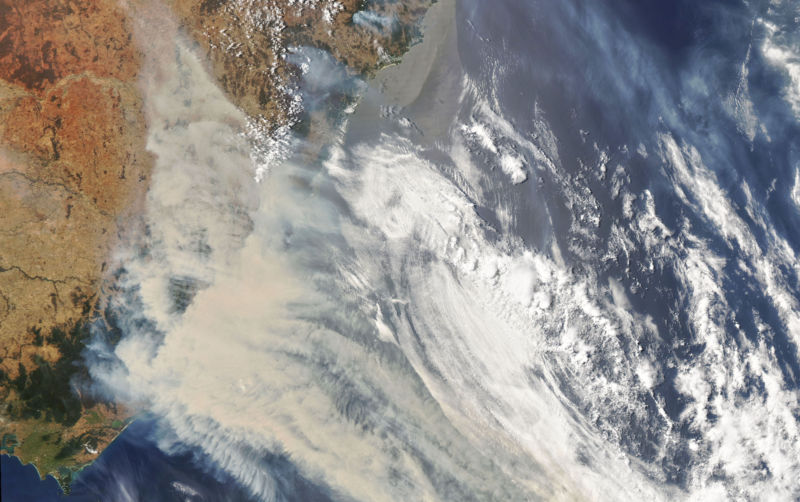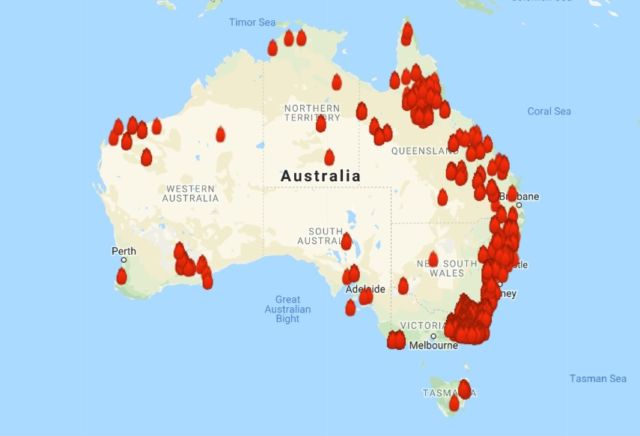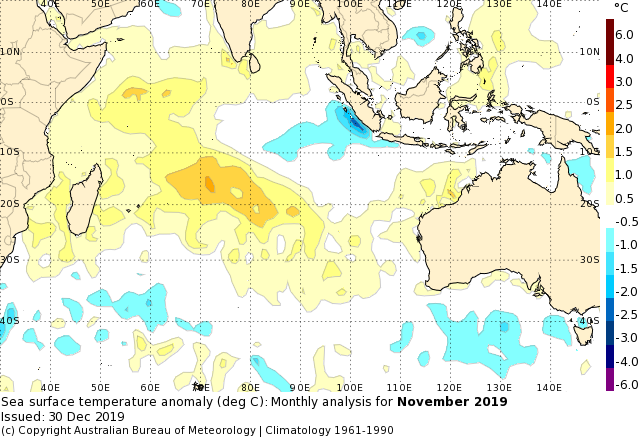
An absolutely astonishing set of bushfires is burning around Australia currently, producing surreal images like those of evacuees fleeing to beaches—or boats—for safety. The situation has been particularly dangerous in Victoria and New South Wales, where fires have surrounded Sydney, choking the air with smoke. So much smoke, in fact, that even New Zealand has been significantly impacted by it over 2,000 kilometers away.
So far, almost 15 million acres of land have burned. For comparison, California's nightmare 2018 fire season burned around 2 million acres.
Unfortunately, the weather has yet to turn helpful, although there are some encouraging signs for the near future. Saturday, specifically, saw worsening conditions, and Victoria activated emergency powers for the first time amidst ongoing evacuations.

So what has been driving these fires to such extremes? Obviously, it's the trio of hot, dry, and windy, but these conditions are occurring due to a combination of long-term trends and short-term weather patterns.
First the long-term context. Last year was both the hottest and driest on record for Australia, extending a drought. Like the rest of the world, Australia's temperatures are climbing to ever-higher records as the climate warms, which boosts evaporation and strengthens droughts in situations like this. Rainfall trends are less clear, but declines have been partly attributed to climate change for at least some regions.
On December 18, Australia saw the nation's hottest day on record, hitting an average of nearly 42°C (over 107°F). That eclipsed the previous record, set just one day earlier.
Besides the long-term warming trend, a couple of factors have been responsible. Although Australia's climate is closely linked to the El Niño Southern Oscillation in the Pacific Ocean, that particular seesaw has been in a neutral state. There is another, similar oscillation in the Indian Ocean, however, called the Indian Ocean Dipole, which has been in a strongly positive phase recently. That means that waters in the western Indian Ocean have been warmer than average, with cooler temperatures to the east. This has the effect of pushing rainy weather away from Australia.

And in the last few months, an unusual pattern in the Antarctic stratosphere has weakened the pole-circling winds. That has also helped produce clear skies in Australia as well as strong westerly winds blowing dry air seaward over Victoria and New South Wales—stoking the fires.
On Saturday, a cold front passed through southeastern Australia and reached the Sydney area in the evening. That may sound like a welcome reprieve, but it came with strong winds at the end of a very hot day—temperatures outside Sydney went as high as 48.9°C (120°F). The winds also shifted from westerly to southerly, pushing the fires in a different direction.
The good news is that the Indian Ocean Dipole has relaxed into a neutral state in the past week, which is clearing the way for Australia's monsoon season to begin in the northern part of the country. Some areas in the south are set to see a little bit of rain soon, as well. That may help, but there's no end to the fire conditions in the forecast yet.
Listing image by NASA EO
reader comments
482